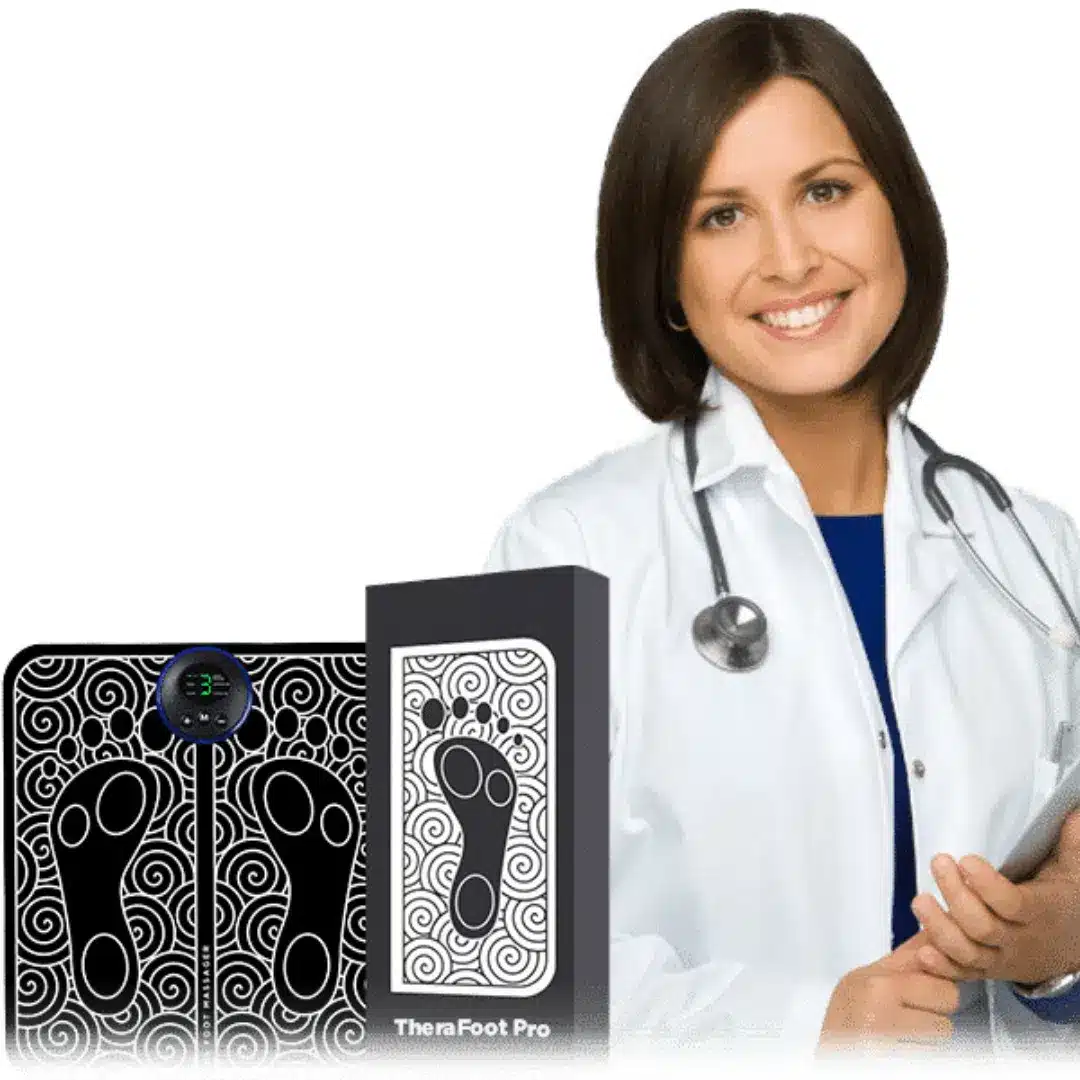As a physical therapist who specializes in virtual care, I’m always searching for innovative, accessible, and effective tools to help my clients manage pain and improve mobility at home. The shift toward telehealth has made it even more important to recommend devices that are evidence-based, user-friendly, and adaptable to a variety of needs.
Recently, I had the chance to thoroughly test the TheraFoot Pro, an advanced electronic foot massager that uses NeuroMuscular Electrical Stimulation (NMES) and Electrical Muscle Stimulation (EMS) technology. After weeks of personal use and recommending it to several clients, I’m excited to share my professional and firsthand experience.
Table of Contents
First Impressions and Setup
When my TheraFoot Pro arrived, I was immediately impressed by its compact, sleek, and modern design. The packaging was professional and the instructions were clear, making the unboxing process smooth. As someone who often guides clients through device setup virtually, I appreciated the intuitive layout and simple controls.
The device is lightweight and portable, making it easy to move between rooms or take along when traveling. The digital display is bright and easy to read, and the buttons are large enough for clients with limited dexterity to operate comfortably. The rechargeable battery is a significant advantage, eliminating the need for constant battery replacements and making daily use hassle-free.

Technology and Features
What sets the TheraFoot Pro apart is its use of NMES/EMS technology. This approach delivers gentle electrical impulses through the soles of the feet, stimulating nerves and muscles to relieve pain, improve circulation, and promote healing. Unlike traditional massagers that rely solely on vibration or compression, this device offers a more targeted and clinically validated method of pain relief.
Some of the key features that I found particularly beneficial include:
-
Eight Massage Modes: From gentle kneading to more intense pulsations, these modes allow users to tailor their experience to their specific needs and preferences.
-
Nineteen Intensity Levels: The wide range of intensity settings ensures that everyone, from those with heightened sensitivity to individuals seeking deep stimulation, can find a comfortable level.
-
Wireless and Rechargeable: The cordless design enhances portability and convenience, while the long-lasting battery supports multiple sessions between charges.
-
User-Friendly Interface: The digital screen and straightforward controls make it accessible for all ages, including seniors and those with limited technical skills.
-
Medical Device Status: The manufacturer claims it is a Class II medical device, which adds a layer of confidence regarding safety and efficacy.
My Experience Using TheraFoot Pro
As a physical therapist, I’m well-versed in the benefits of NMES/EMS for pain management and rehabilitation. However, I was curious to see how the TheraFoot Pro would perform in a home setting, both for myself and for clients with varying needs.
Personal Use
I began by using the device for 20-minute sessions each evening after work. As someone who spends long hours on my feet during in-person sessions and at my standing desk during virtual consultations, I often experience mild foot fatigue and occasional soreness. After just a few sessions, I noticed a marked reduction in discomfort and an overall sense of relaxation in my lower legs and feet. The electrical impulses provided a gentle tingling sensation that was both soothing and invigorating.
I experimented with different massage modes and intensity levels, finding that the mid-range settings offered the best balance of comfort and effectiveness for me. The device was easy to clean and store, and I appreciated being able to use it while reading, watching TV, or even during virtual meetings.
Client Feedback
I recommended the TheraFoot Pro to several clients dealing with chronic foot pain, diabetic neuropathy, plantar fasciitis, and circulation issues. The feedback has been overwhelmingly positive. Clients reported:
-
Reduced pain and swelling: Many noticed significant relief after just a week of daily use.
-
Improved mobility: Some were able to walk longer distances or stand for extended periods without discomfort.
-
Enhanced relaxation: The device became a part of their evening routine, helping them unwind and sleep better.
One client with diabetic neuropathy shared that the TheraFoot Pro provided a level of relief they had not experienced with other at-home devices. Another client recovering from plantar fasciitis found that combining the device with prescribed stretches accelerated their recovery and reduced morning stiffness.
Clinical Insights and Recommendations
From a clinical standpoint, the TheraFoot Pro aligns well with best practices in pain management and rehabilitation. NMES/EMS technology is known for its ability to:
-
Stimulate blood flow: This can help reduce swelling and promote tissue healing, especially in individuals with poor circulation.
-
Interrupt pain signals: By stimulating nerves, the device can block pain pathways and provide lasting relief.
-
Relax tense muscles: Electrical impulses can help release muscle tightness, which is particularly beneficial for those with chronic foot and leg pain.
-
Support neuroplasticity: Regular stimulation may enhance nerve function and sensitivity, which is valuable for clients with neuropathy or nerve damage.
The device’s versatility makes it suitable for a wide range of users, including:
-
Individuals with chronic pain conditions (neuropathy, plantar fasciitis, arthritis)
-
Athletes and active individuals seeking recovery and relaxation
-
Seniors who need a gentle, non-invasive method to manage discomfort and improve circulation
-
People with sedentary lifestyles or those who stand for long periods at work
Practical Considerations
Ease of Use
One of the most significant advantages of the TheraFoot Pro is its ease of use. The setup process is straightforward, and the device can be operated without assistance. This is particularly important for my virtual clients, as I can confidently recommend it knowing they will not struggle with complicated instructions or maintenance.
Safety
The device is non-invasive and drug-free, minimizing the risk of side effects or interactions with medications. The ability to adjust intensity and mode ensures that users can avoid overstimulation or discomfort. As with any electrical stimulation device, I advise clients with pacemakers or certain medical conditions to consult their physician before use, but for the majority, it is a safe and effective option.
Portability
The lightweight, wireless design means clients can use the TheraFoot Pro at home, at work, or while traveling. This flexibility supports consistent use, which is critical for achieving optimal results.
Results and Outcomes
After several weeks of regular use, both my clients and I observed the following outcomes:
-
Noticeable reduction in pain and discomfort
-
Improved circulation and decreased swelling
-
Enhanced flexibility and range of motion
-
Greater sense of relaxation and well-being
These results were most pronounced with consistent daily sessions, typically lasting 15–20 minutes. For clients with more severe symptoms, combining the device with targeted exercises and stretches (as prescribed in our virtual sessions) yielded even greater improvements.
Is TheraFoot Pro Worth Buying?
In my professional opinion—and based on both my personal experience and the feedback from my clients—the TheraFoot Pro is absolutely worth buying for anyone seeking an effective, convenient, and user-friendly solution for foot and leg pain. Its modern technology, customizable settings, and ease of use make it a standout choice among at-home pain relief devices.
Whether you are managing chronic conditions, recovering from injury, or simply looking to enhance your daily comfort and mobility, the TheraFoot Pro offers tangible benefits that can significantly improve your quality of life. As a physical therapist committed to empowering clients through virtual care, I am confident in recommending this device as a valuable addition to any self-care routine.

Sophia Anderson, PT, DPT is a physical therapist who offers online pain management consultations. She helps people with various types of pain, especially neck, back, and knee pain.
She graduated from the University of St. Augustine with a Doctor of Physical Therapy (DPT) degree. She has experience in orthopedic physical therapy, sports medicine, neurological rehabilitation, advanced assessment and treatment of running injuries, and advanced treatment of the pelvic complex, spine, and extremities.
If you’re experiencing any pain, let Sophia Anderson, PT, DPT help you out.